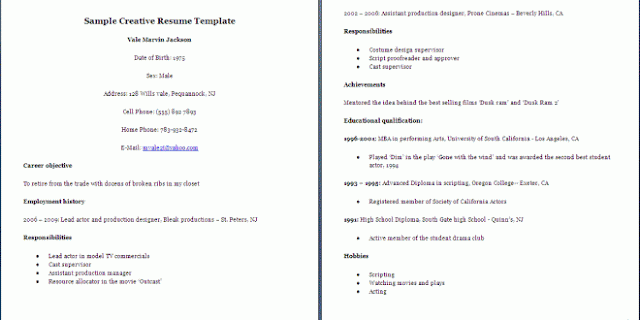CV – The best way to write a good cv for application
CV
The best way to write a good CV (curriculum vitae)
Your CV (CV) is the primary means of presenting you as a job seeker with a potential employer. But in many cases, it is seen those job seekers do not emphasize their cinematography beautifully and accurately. As a result, many qualified candidates are not called on Job Interview and are denied the opportunity to prove their qualifications.
Before you make your CV, look at the reality.
§ A single employer does not give a biographical (CV) of more than 30 seconds on average. So it should be short. It is obvious that the information should be presented. To avoid unnecessary or less important information.
§ An inexperienced / newly passed job seeker should not be more than one to two pages.
§ Your cv resume is the medium of marketing yourself. So it should be interesting. But do not use any kind of colorful paper or colorful ink. To highlight something, you can bold it, italic or underline it.
§ Remember, if there is a spelling mistake or lingual/grammatical mistake in your resume, then the potential employer will have a negative connotation about you. It will be revealed that you are not able to do any work properly. So after making a CV, read it manually and show the person who knows correct English.
§ When you send a resume to apply for a job announcement, try your CV to make it according to the needs of the job (Customize your CV). It is necessary to read the job notification well and research the organization. For example, if you know that the employer can appoint anywhere in Bangladesh, then you can mention in your CV that you have lived in some places in Bangladesh earlier. Or an employer is looking for a person who has to play an “organizer” role, in that case, if you mention the role of any organizing organizer in your student life, your employer with CV will get a separate value.
§ It is very important that you give accurate information in your CV. Do not provide any information that might be proved wrong in your job interview.
CVs are different parts
The information that you present in a biographical presentation (CV), is that–
* Title
* Career Summary -> More needs for those who have experience.
* Career purpose -> More needs for newly passed employment candidates.
* Experience
* Educational qualification (Education)
* Additional Information
* Personal information
* Reference (Reference)
Title: (Title)
Your full name will be at the beginning of the biography. It will be bold and write in a bigger font (avoid nickname). Then there will be your address (you can get the current address where you send a letter), phone number and e-mail address. This part will be at the center of the page so that it can be seen first.
Career Summary
This is most applicable for people who have more than 4-5 years of work experience. In this section, you mention the maximum 6-7 lines in the workspaces of your previous job experience. Briefly summarize the achievements of your previous experience (if any).
Career Objective This is most applicable for the newly passed job-seekers or few experienced (1/2 years) job applicants. In this section, you mention the current goal (Immediate goal) in your career and present it in the context of how you can meet the needs of the advertisement or advertised job or organization. Summarize the positive characteristics of the job. It is important to write a Career Objective by matching the job notification or company needs. Emphasize what you can give to the company, not on what you expect from the company.
Experience: (Work Experience)
For experienced professionals, this section should come before educational qualification. In case of newly passed or little experience, educational qualifications (education) and later experience should come.
The information that you will mention about each of your previous experiences is,
* Organization name (organization name)
* Designation (Designation)
* Time period- From & To (Period)
* Job responsibility (responsibility)
* Special achievement (significant achievement)
* Designation (Designation)
* Time period- From & To (Period)
* Job responsibility (responsibility)
* Special achievement (significant achievement)
If you have worked in different positions at different times in the same organization, then specify it separately.
The most important thing is that you will first mention your most recent experience, followed by a one-on-one experience in the Resume Chronological Order which will end with your first experience.
It is best not to mention your very important or short-term experience. But keep in mind that your List of experience does not have much time gap.
copyright Tips-Box.




Comments
Post a Comment